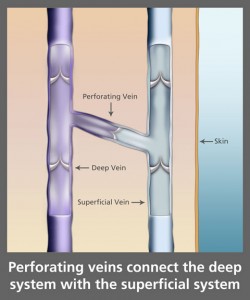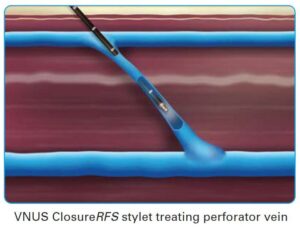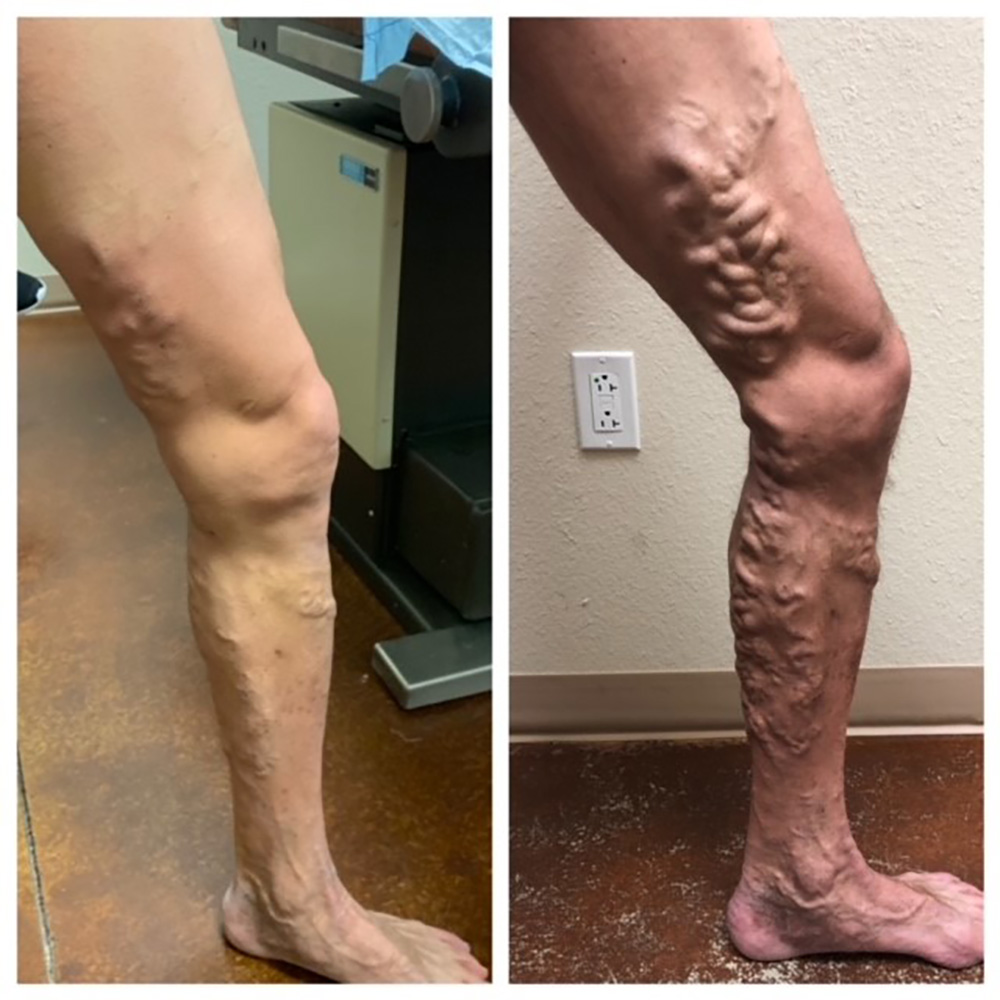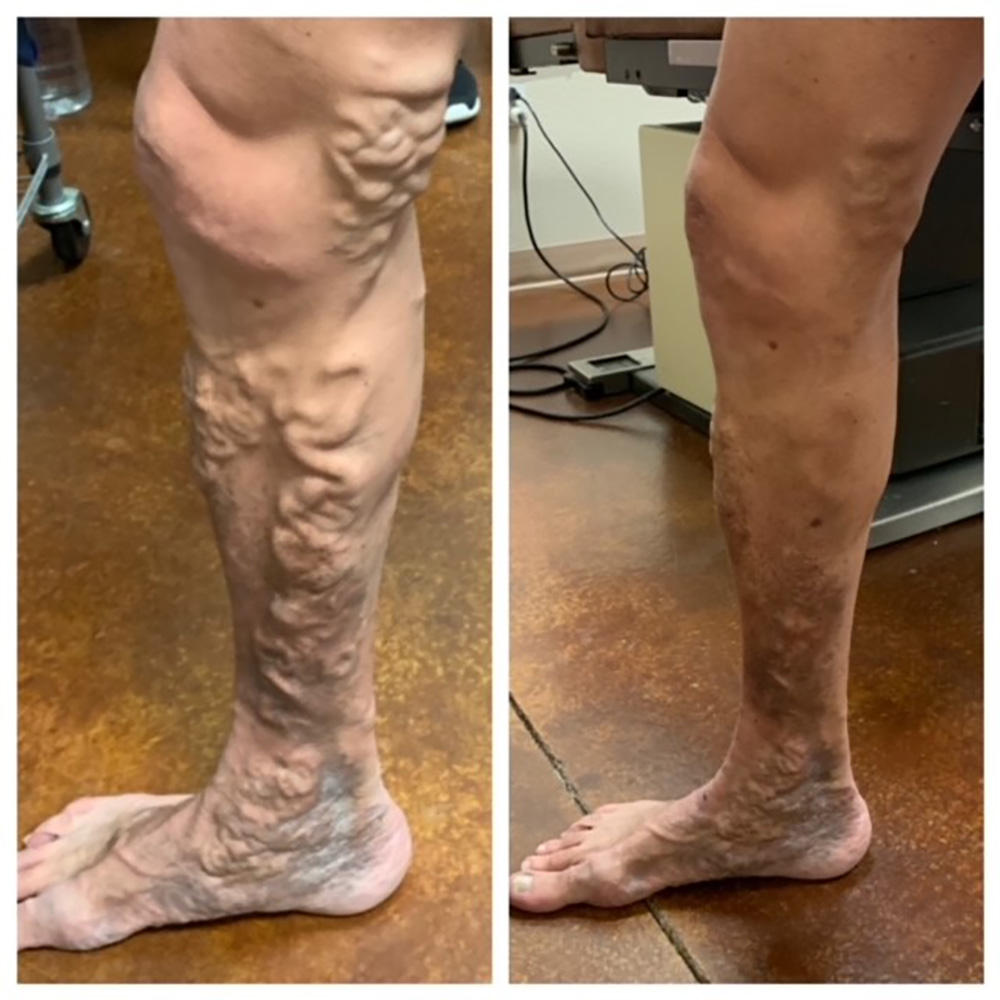Precise Relief: Exploring Radiofrequency Perforator Ablation for vascular wellness
LJVascular2023-08-31T18:32:31-07:00Precise Relief: Exploring Radiofrequency Perforator Ablation for vascular wellness
In the realm of advanced vascular treatments, Radiofrequency Perforator Ablation is revolutionizing the way we address vein issues. In this article, we delve into the intricacies of this procedure, exploring its benefits, the process it involves, and what you can anticipate on the day of treatment. Join us on a journey to understand how Radiofrequency Perforator Ablation can enhance your vascular well-being.
Understanding Radiofrequency Perforator Ablation: A Breakdown
Radiofrequency Perforator Ablation focuses on perforator veins, the short connections bridging deep and superficial veins. These veins, like others, can experience valve damage and venous reflux, contributing to discomfort and potential health risks. This innovative procedure aims to rectify these issues, offering relief and improved vascular health.
Why Perforator Veins Matter
Perforator veins are pivotal in linking the superficial and deep venous systems within the extremities. They facilitate the flow of blood from superficial veins to deep veins, aiding in the process of returning oxygen-depleted blood to the heart. However, when the valves in these veins malfunction, venous reflux can occur. This may lead to blood buildup, increased pressure, and complications such as edema, skin discoloration, dermatitis, and skin ulcers.
The Treatment Process: Unveiling the Steps
Radiofrequency Perforator Ablation is a well-structured outpatient procedure, designed to swiftly address these issues. Here’s a closer look at the treatment process:
- Preparation and Anesthesia: The procedure commences with the application of local anesthesia. Some patients opt for mild oral sedatives like Valium for enhanced relaxation.
- Patient Comfort: You’ll be provided with a gown or shorts and positioned for comfort, with special accommodations made based on your needs.
- Guidance and Insertion: Using ultrasound guidance, a fine needle is inserted into the perforating vein through the skin.
- Radiofrequency Energy: The magic happens with the delivery of radiofrequency energy, which shrinks the perforator vein and eliminates abnormal flow.
- Treatment Duration: Approximately 10 minutes are allotted for each perforating vein. Patients may have one or multiple veins treated in the same leg, requiring about an hour in the office due to preparation and setup.
A Day of Treatment: What to Expect
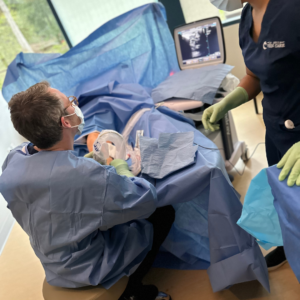

On the day of your procedure, a few steps ensure your comfort and well-being:
- Anesthesia and Sedation: Local anesthesia is applied. Some opt for mild sedation to enhance relaxation.
- Positioning: Special accommodations are made based on your comfort level, and you’re given the choice to watch Netflix or listen to music.
- Ultrasound Mapping: Your veins are mapped, and numbing agents are injected.
- Radiofrequency Catheter: A tiny puncture is made to insert the radiofrequency catheter.
- Local Anesthetic: Additional local anesthetic is administered, numbing the vein and ensuring comfort.
- Radiofrequency Treatment: The vein is painlessly treated with radiofrequency energy.
- Post-Treatment Care: A compression stocking is applied, and walking is encouraged for the next 72 hours.
Post-Treatment Care: Guiding Your Recovery
After treatment, walking for 30 minutes twice daily is recommended to alleviate discomfort and prevent blood pooling in the legs. Avoid strenuous exercise, heavy lifting, saunas, hot tubs, and leg massages for two weeks to support proper healing.
Radiofrequency Perforator Ablation is a modern marvel in vascular care, offering relief from discomfort and enhancing overall well-being. At La Jolla Vein & Vascular, our expert medical professionals are dedicated to providing personalized care for your vascular health. By embracing innovative treatments like Radiofrequency Perforator Ablation, you can take confident strides towards a healthier, more vibrant life.
“Bringing Experts Together for Unparalleled Vein and Vascular Care”
La Jolla Vein & Vascular (formerly La Jolla Vein Care) is committed to bringing experts together for unparalleled vein and vascular care.
Nisha Bunke, MD, Sarah Lucas, MD, and Amanda Steinberger, MD are specialists who combine their experience and expertise to offer world-class vascular care.
Our accredited center is also a nationally known teaching site and center of excellence.
For more information on treatments and to book a consultation, please give our office a call at 858-550-0330.
For a deeper dive into vein and vascular care, please check out our Youtube Channel at this link, and our website https://ljvascular.com
For more information on varicose veins and eliminating underlying venous insufficiency,
Please follow our social media Instagram Profile and Tik Tok Profile for more fun videos and educational information.
For more blogs and educational content, please check out our clinic’s blog posts!





